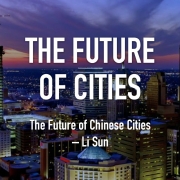The Myth of America’s Decline
North America may suffer from some of the world’s poorest political leadership. Yet it seems destined to remain the wealthiest, most dominant place on Earth.
This may come as a surprise to many. After all, generations of pundits have insisted that the future will be forged elsewhere – Europe for some, Japan for others and, more recently, China. But none have the resources, the dynamic population and innovative acumen of North Americans.
Once taken for granted, China’s claim to the future is looking especially wobbly. In 2018, Chinese foreign ministry official Zhao Lijian described efforts to slow China’s dominion as being ‘as stupid as Don Quixote versus the windmills’. He added that ‘China’s win is unstoppable’. Today, China’s triumph looks far from inevitable. Projections that China could surpass the US in terms of aggregate economic output as soon as 2028 are being readjusted to 2036. Some now believe it won’t happen at all.
As for Japan or the EU, neither are likely to ever surpass the US. Each has experienced consistently slower growth. According to International Monetary Fund data, the eurozone economy grew about six per cent over the past 15 years, compared with growth of 82 per cent for the US during the same period. Europe’s once formidable industrial base has eroded in large part due to the ever rising burden of regulation. Germany’s economy, the most powerful economy in the EU, is barely the size of that of California.
Nothing better reflects the tectonic shift in global economic power than investment flows. Between 2012 and 2022, US inbound foreign investment swelled by nearly $100 billion in adjusted dollars, well above the level of investment into China. Levels of inbound investment into the EU and the UK have actually fallen during the same period.
Indeed, investment in China dropped from more than $300 billion in 2021 to a 30-year low of less than $50 billion in 2023. Other parts of Asia are headed West. Last year, Taiwan-based TSMC, the world’s leading semiconductor foundry, decided to build a $12 billion new plant in Arizona. Samsung, a huge Korean chipmaker, is also shopping for sites for a $17 billion plant in the US.
The US is also the world’s preeminent military power. Although somewhat degraded from its Reagan-era strength, and challenged increasingly by China’s expansion, the US military remains the dominant force on Earth. The US spends roughly 3.5 per cent of GDP in defence and has a military budget roughly five times that for the combined militaries of the UK, France and Germany. Despite some recent increases, most European countries fail to spend even two per cent of GDP on defence. They have, until now, depended largely on the US to keep the Ukrainian cause alive. In recent months, European countries have once again been asking the US to protect what are really their own critical shipping lanes in the Red Sea.
Why America leads the way
The resurgence of North America clearly does not stem from either the leadership of doddering US president Joe Biden, who seems barely in control of his own White House, or his rival, the clearly demented Donald Trump. Nor has Canada’s uber-woke prime minister, Justin Trudeau, been of any help. Rather, the key lies in three factors: natural resources, technological dominance and demographic vitality.
Overall, natural resources account for more than half of all Canada’s exports and roughly one-quarter of those of the US. Together the US and Canada produce roughly twice as much oil as either Russia or Saudi Arabia. Fossil fuels, the demon rum of the green catastrophists, are not going away, even in Europe.
Read the rest of this piece at Spiked.
Joel Kotkin is the author of The Coming of Neo-Feudalism: A Warning to the Global Middle Class. He is the Roger Hobbs Presidential Fellow in Urban Futures at Chapman University and and directs the Center for Demographics and Policy there. Learn more at joelkotkin.com and follow him on Twitter @joelkotkin.
Homepage photo: Nikolas Zane, via Flickr, under CC 2.0 License.








